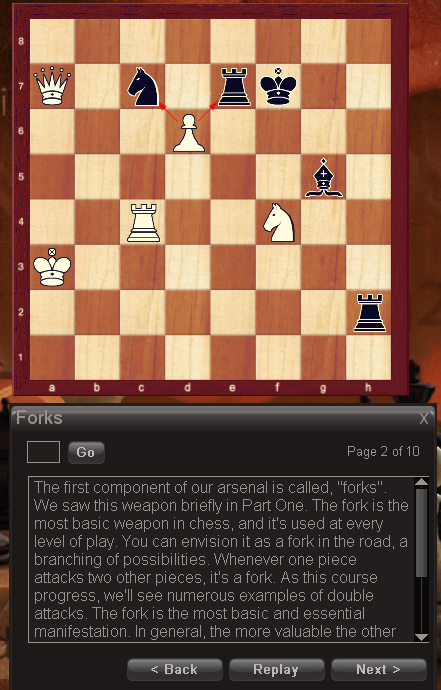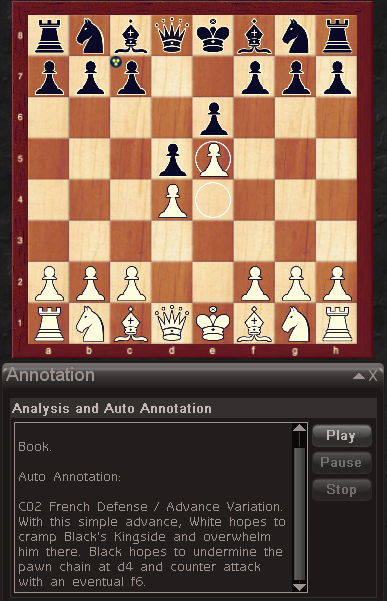I (black) blundered here by taking that pawn on f3:
Hint 1: show
Hint 2: show
Fortunately my opponent (white) didn’t see the solution and tried Rf1:
Hint 1: show
Hint 2: show
Solution: show
Today both me and my opponent missed a chance to turn the game around.
1. Find a better move 15 for white which wins material.
2. Find a better move 29 for black that wins material.
Once again I (black) got in trouble after my opponent engaged multiple threads at once with 20. f4:
I used up almost all my time to think of a way out. Usually there is one in such a situation. But I didn’t see that actually there was not only a way to get out with minor material disadvantage, but even with a significant advantage!
Black to move and win material.
Hint: show
Solution: show
My own “solution” was a bit puny. If you look at how I won, please consider that after that situation I had only two minutes left :-)
show
Once again my newly gained endgame powers saved a game in which I messed up the middle game. Thank you, Josh Waitzkin! Great tutorial. I played the whole endgame through the 10 second Fisher time, since I was already down to 4 minutes at move 35.
At the latest after my move 52 it is obvious that I am winning. But there is a better way. After 52. ...Bxc7, how could I (white) have gained a queen faster?
I am not a very good chess player, although I have played for 25 years. My FICS rating is below 1800. So you may first consider a chess learning guide by someone more experienced. This guide might still help when you want the opinion of someone in the same class.
One thing I have been planning for over 10 years is to improve my chess skills by a whole level. This year I did, and I was stunned by the great new ways that computers and the internet offer for beginners and intermediate players to learn, compared to what I had in the 80s.
I found it far more effective to use an interactive tutorial than to read a book. A good interactive tutorial asks questions, like tiny exercises, which force the reader to do something on the board. The additional gain compared to reading a traditional chess book is huge. The solutions that are out there do not fulfil all my dreams, but they are quite nice.


This is such an incredible help! After I played a game (against a computer or against a human) I always feed it to a computer and get an incredibly useful analysis. It comments on my moves, finds all tactical blunders and so on. You can’t imagine how much this has helped me to get better! While it doesn’t miss any tactical opportunity, it is no help for strategy at all. That would require a human mentor to look at my games. The next best thing are probably the positional and strategy lessons of Chess Mentor (see above). They present a position in the late opening or middle game and then require to find a good strategy to be provided by a sequence of moves.
Pro: It has audio output and comments on more aspects than any other analysis software I tried. For example when I do a particular unusual opening move it says something like: “Ah, interesting. That’s the Steinitz Attack. Some guy named … has used it around 18.. with great success. It became less popular when …d6 has been discovered. After that move white has no advantage left from this move. (…)” Such facts become very interesting when they refer to a game I just played, as boring as they would otherwise be! Another advantage is that it directly says why my move is not good.
Contra: It is inconvenient to browse the move alternatives slowly and manually and to try additional variations.

Pro: Great navigation options to browse the suggested alternatives, very easy to let the computer answer “but…” and “what if” and “but what if …” questions regarding its own suggestions or anything at all, actually. Chessmaster Grandmaster Edition might leave you alone with troubling thoughts like “I don’t have a good feeling about the alternative it suggested. It only works because black plays along in move x.” while the combination of a chess engine and such a frontend will easily show any subvariation you can think of. It’s like a neural interface.
Contra: The output follows a primitive scheme, while in Chessmaster Grandmaster Edition you have the feeling of being mentored by an AI from the future. No comments on opening moves at all, and no explanations like “this is a better move because it pins the black knight to the black queen”, which Chessmaster can provide.
When studying openings I found it very disturbing that often the main line could easily be disrupted by a move that looks far greater. The books don’t say anything about such variations. There are many, many moves in the openings and early middle games that look great, and it is very hard to find out why they are not great and what to do if someone plays them. Game explorers help to see what grandmasters played against an unusual, but not entirely far-fetched move. They are great to learn a particular class of opening moves or repeating early middle game lines. When I read a book back in the 80s it always left me alone with thoughts like “But that will never work when black does …” and then when I tried it black does exactly that, and I was still helpless and would better not even have started to read about it.
I (black) felt that there was a way to get out of this alive and with even material, after I accepted the sacrifice of Chessmaster Grandmaster Edition (white) and ended up in this situation. So I used up all my time to think myself out of it … and still failed.
Do you see a way out? It is possible.

Solution: show
Something in the general line of 1. … c4 2. Qxc4 Be6 3. Qb3 Nxf4 4. Qxb7+ could also work.
The key is to see that … Qxb7 and … Qxa8 is not such a big thread, because there is a potential trap against the white queen. As a consequence, the light bishop can be activated.